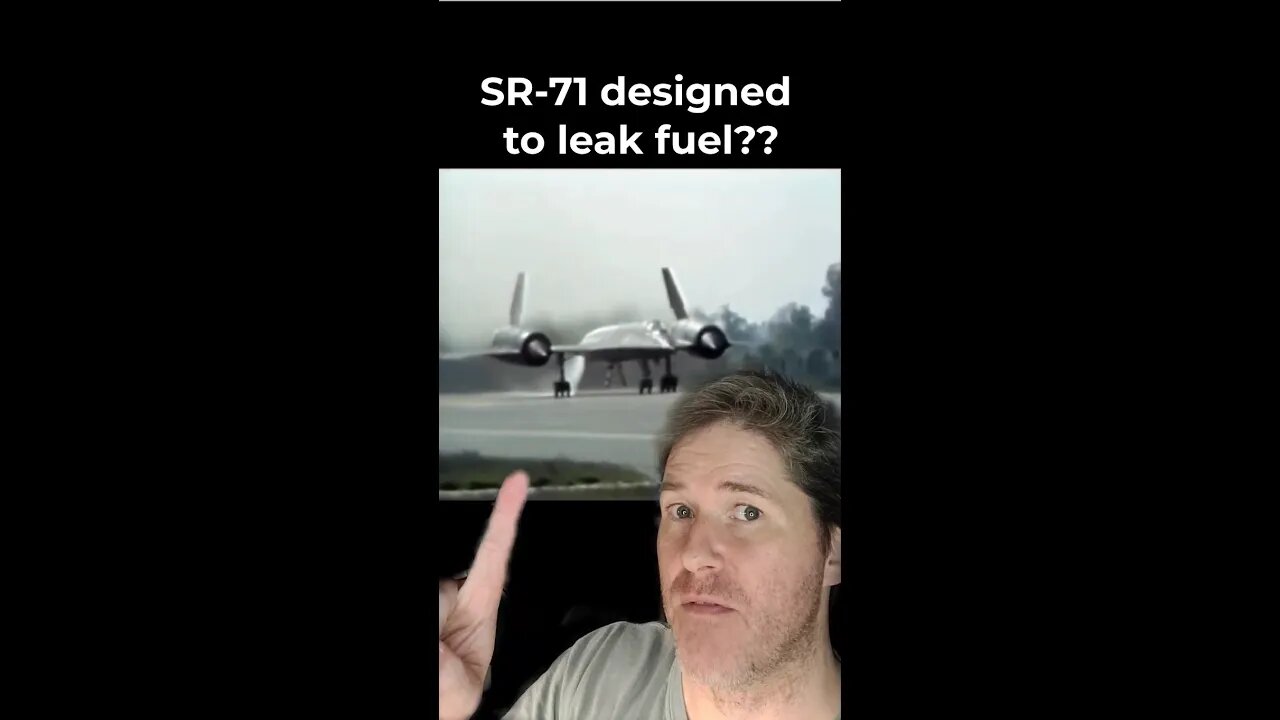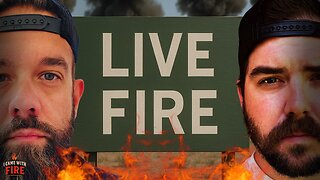Premium Only Content

Myth: SR-71 Designed to Leak Fuel
👍SUBSCRIBE👍 to see more tech videos! → https://www.youtube.com/channel/UCS7Q_pcIDNHefwBwuH7FhrQ?sub_confirmation=1
🔷FOLLOW MY SOCIALS🔷
Twitter - https://twitter.com/Warning_56k
Facebook - https://www.facebook.com/Warning56k
TikTok - https://www.tiktok.com/@warning56k
You may have heard the myth that the SR-71 was "designed to leak fuel". Lets break that down.
The SR-71 was no more "designed to leak fuel" than an average car tire is 'designed to leak air'.
The SR-71 was designed to continually operate at speeds over Mach 3, and where there's speed, there's friction, and friction means heat. The SR-71s hull was primarily composed of titanium which is very resistant to heat, but still expands when heated to the 400 degrees Fahrenheit it experienced when at Mach 3 speeds. Likewise, the skin would contract when the SR dropped below Mach speed. The engineers of the SR-71 designed the aircraft to be able to withstand this repetitive expansion and contraction of the skin, but it led to an issue... how the SR-71 held its fuel.
The SR-71 did not have typical metal fuel tanks. Instead, it featured an innovative flexible, bladder-like fuel tank system called a 'total wet wing fuel tank system', where the fuel was directly contained by the aircraft skin its self. The gaps in the skin panels were filled with a special type of sealant made to not only hold back the fuel, but to also hold up to the repetitive expansion and contraction experienced. The problem with this repetitive expansion and contraction of the skin combined with the extreme temperatures variances experienced eventually caused the sealant to deteriorate and break down, causing leaks.
Fuel sealants were applied and re-applied during maintenance intervals and when equipped with fresh seals, the SR-71s did not leak or leaked very little. The cost and time required to completely reseal an SR-71 with it's high demand for mission readiness, meant that unfortunately some leaks had to be accepted. It wasn't a 'problem' per say, but was still an issue.
It was an issue such that the rate of leakage and when to replace the seals was considered and built into a maximum allowable leakage chart that listed the limits of leak rates in certain areas and when seal replacement was required.
So, the SR-71 did leak fuel at times, but not 'by design' and nor was it a desired outcome.
This leads to the other common myth that goes "The SR-71 leaked so much fuel that they had to fill it completely up and had to immediately refuel after takeoff".
This is not true. While the amount or rate of fuel leakage varied depending on where one specific SR-71 lied on its maintenance interval timeline, on average they leaked relatively little compared to its capacity. SR-71s were not completely filled up before take-off. In fact they were actually only partially filled with fuel at takeoff for safety reasons, such as if an engine failed it would be much easier to land, as well as much easier on the brakes and tires. This is also the same reason why commercial aircraft may dump fuel before unexpectedly having to land if diverted due to weather conditions, technical problems, or emergency landings immediately after takeoff.
The SR-71s unique design that allowed it to achieve its incredible speed and altitude was a detriment at low speeds and low altitude. Due to its sub optimal low-speed design, it had to use its afterburners at takeoff and during its climb to altitude, greatly increasing its already 'high' rate of fuel consumption with the partial fuel that it had at take off.
There's also another reason the SR-71 had to refuel after takeoff, that's not talked about often.
During Mach 3 cruise, the JP-7 fuel in its six fuel tanks heated to over 300 degrees F., with the aircraft's titanium skin reaching nearly 400 degrees F., heightening the volatility of the fuel. This led to a limitation: a maximum speed of Mach 2.6 unless an inert atmosphere was maintained inside the fuel tanks. This required the SR-71 to be equipped with nitrogen tanks that held 260 liters of liquid nitrogen so that as the SR-71 consumed fuel, the growing empty space in the fuel bladders was gradually replaced with nitrogen gas. This meant that after takeoff and achieving altitude, the SR-71 had to refuel with JP-7 so it could then pressurize its fuel tanks with nitrogen gas and go faster than Mach 2.6.
So, the SR-71 had to immediately refuel after takeoff because #1, it was only partially filled with fuel at takeoff. #2 its inefficient design at low speed and low altitude made it continually use its afterburners during and after takeoff to achieve altitude. And #3 it could not go faster than Mach 2.6 without full tanks or partial tanks pressurized with nitrogen gas.
The next time you hear someone say "The SR-71 was designed to leak fuel" or "It leaked so much fuel on the runway it had to immediately refuel", let them know the facts.
-
 3:59:36
3:59:36
StevieTLIVE
4 hours agoFriday Night Warzone HYPE
28.5K1 -
 3:47:10
3:47:10
SynthTrax & DJ Cheezus Livestreams
1 day agoFriday Night Synthwave 80s 90s Electronica and more DJ MIX Livestream Michael Jackson / AI Art Compilation Edition
32.8K -
 1:03:57
1:03:57
Sarah Westall
5 hours agoMara Lago Accord Joins the Fed, Fed Waves the White Flag & more w/ Andy Schectman
17.2K -
 2:44:12
2:44:12
I_Came_With_Fire_Podcast
1 day ago*BREAKING* Special Guest Katarina Szulc
24.5K2 -
 3:22:20
3:22:20
megimu32
5 hours agoOFF THE SUBJECT: FAFO Friday! Bodycams & Mario Kart Mayhem!
16.8K4 -
 55:36
55:36
Flyover Conservatives
23 hours ago4 Strategies to Create Opportunity from Nothing - Clay Clark | FOC Show
23.7K -
 1:49
1:49
Gaming on Rumble
10 hours agoWhat is the Rumble Creator Program!?!? (Active Premium Creators) | Lvl UP
25.2K2 -
 5:56:26
5:56:26
Midnight In The Mountains
7 hours agoGaming w/ PER·SE·VER·ANCE | Midnights Play Fortnite | Split Screen Action!
16.5K2 -
 3:56:17
3:56:17
Nerdrotic
9 hours ago $13.54 earnedLet's TACO-bout Take Us North, Hollywood COPE! Cracker Barrel CRACKED! | Friday Night Tights 369
93.6K5 -
 1:16:30
1:16:30
RiftTV
7 hours agoHow Blue Light is Turning You Gay | The Rift | Guest: Jack Kruse
31.5K10